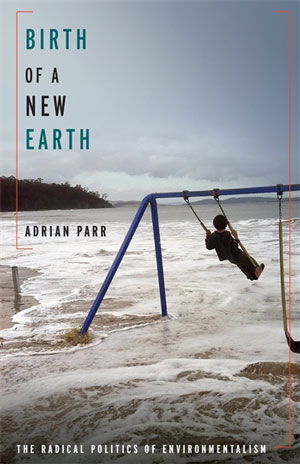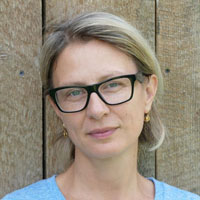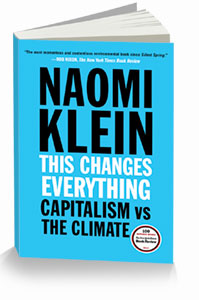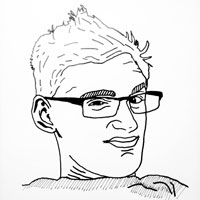 BIRTH OF A NEW EARTH:
BIRTH OF A NEW EARTH:
The Radical Politics of Environmentalism
by Adrian Parr
Columbia University Press, 328 Pages
reviewed by Robert Sorrell
Near the beginning of his ecstatic, beautiful “Poem to My Child, If Ever You Shall Be,” Ross Gay writes:
I wonder, little bubble
of unbudded capillaries, little one ever aswirl
in my vascular galaxies, what would you think
of this world which turns itself steadily
into an oblivion that hurts, and hurts bad?
Would you curse me my careless caressing you
into this world or would you rise up
and, mustering all your strength into that tiny throat
which one day, no doubt, would grow big and strong,
scream and scream and scream until you break the back of one injustice,
or at least get to your knees to kiss back to life
some roadkill?
I first read this poem as Hurricane Harvey and Maria devastated the Caribbean and parts of the southern United States. The poem captivated me. In Gay’s steady hands the prospect of the future, symbolized by this possible child, is explored with deep empathy, imagination, and emotional complexity. The question at the center of these stanzas—how would a child react to being brought into this world?—is one that seemed especially apt in the aftermath of such destruction and our government’s skewed, inadequate response.
This connection, between climate change and children, is made frequently. Just a few weeks before reading Gay’s words, I’d heard a friend say that one of the main reasons she wasn’t sure about having kids was fear of climate change. A quick search found a charity called Save the Children with pictures, stories, and infographics dedicated to explaining how climate change specifically affects children. And many articles and books on climate change, even those trying hardest to refrain from nostalgia and sentimentality, end up relating climate change to children, as emblem of the future.
But in terms of climate change, and maybe in culture more generally, there are a few problems with viewing the future this way. The first is that as in Gay’s poem, these “children” are often more conceptual than real. This lack of specificity allows for children to be turned into a semantic tool that can be twisted to fit a variety of arguments across the political spectrum. Maybe more importantly, however, is the way that (hypothetical) children are often used to discount the lives and experiences of humans living today. Conservative politicians and advocacy groups often prioritize the lives of unborn fetuses over the parents’, and bombings or other terrorist acts are carried out in abortion clinics in the name of “saving the children.”
In the context of climate change, imagining children as the inheritors of a wounded earth is equally dangerous. Not only do these formulations escape any attempt at specificity regarding gender, class, race, ethnicity, geography, and other factors, but they also allow us to perpetually push climate change to the horizon. If climate change is always a problem for our children, then it stands to reason that it isn’t really a problem for us in the present.
Yet in the case of climate change, the “future” and “now” are so inherently connected that any separation of the two is an illusion. Right now the ice caps are melting, sea levels are rising, the global surface temperature continues to increase. Climate change has already taken victims, both human and non. When will we stop imaging climate change in the future and how can we reorient ourselves to this reality?
Adrian Parr’s new academic work on climate change, Birth of a New Earth, attempts to answer this question by tapping into the recent trend of considering the positive, some might even say utopian, possibilities that the crisis of climate change allows. She argues, “Regardless of environmental harms and changes in climate impacting people differently, there remains a shared human experience of hardship that will intensify as time passes. For this reason, the environmental and climate crises contain the political potential to radically change social life so it evolves into a more equitable, inclusive, collaborative, and voluntary social system.”

Parr’s book follows particularly on Naomi Klein’s 2014 polemic This Changes Everything, which marked a radical shift in how climate change was discussed in popular books and mainstream media. While certainly not the first to have these ideas, Klein argues forcefully that the crisis of climate change opens up a space for reevaluating and reorganizing our entire society. She writes, “I have begun to understand how climate change–if treated as a true planetary emergency akin to those rising flood waters–could become a galvanising force for humanity, leaving us all not just safer from extreme weather, but with societies that are safer and fairer in all kinds of other ways as well.” In short, Klein argues, climate change offers an opportunity to create a more just, inclusive society. How and why this crisis could become an opportunity is tied to her book’s fundamental idea: that climate change will change everything and perhaps some of those changes, if we work hard, will be for the better.
Klein’s book was a response to a very recognizable problem: how do we, in our daily lives, wrap our heads around the enormity of climate change? How do we respond to the often terrifying deluge of scientific reports, news stories, and dire projections? Sometimes we change our behavior. Most often we rationalize. Believing that changes in technology or state intervention will provide a cure allows us to continue our lives guilt-free; on the other hand, only focusing on one’s own consumption disregards the fact that climate change is a global problem that requires a large scale solution. Klein herself lived in this cognitive dissonance for years: worried, but avoiding some of the bleaker scientific reports, trying to consume less, but traveling often enough to have elite frequent flyer status.
The difficulty of simply comprehending climate change, holding it all in our head at one time, is more or less what caused philosopher Timothy Morton to call the climate change phenomena a “hyperobject,” something that is so vast in both space and time that it effectively overwhelms reason. Yet even if we could comprehend the entirety of climate change, the sheer terror it invokes makes it difficult to focus on for very long. Klein’s revelation comes in turning this vision of climate change on its head. Shifting the lens, in her words, “from one of crisis to possibility.” Once that change had been made, she writes, “I discovered that I no longer feared immersing myself in the scientific reality of the climate threat. And like many others, I have begun to see all kinds of ways that climate change could become a catalysing force for positive change.”
Parr asks the question lurking behind Klein’s work: if climate change will change everything, what if the changes aren’t good? In trying to answer this question, Parr takes the agnostic view, claiming that climate change not only presents an opportunity for negative political change, but further, that “environmental politics is [sic] well positioned to change how exploitation and oppression are normalized.” And reinforcing this idea, “environmentalism is curtailed if it turns into the ideological supplement of neoliberal capitalism and militarism.”
What Parr warns of can be compared to two post-9/11 actions: the passage of the Patriot Act, and the Authorization for the Use of Military Force, a tricky bit of legalese that allowed the U.S. President to undertake the “war on terror” without ever officially declaring war (which would involve Congress). Moments of crisis can deputize a government with extralegal power and suppress checks and balances. At times this allows a government to respond quickly to a time-sensitive situation, but it can also result in abuses of civil rights and civil liberties and set dangerous legal precedents that can be used down the line to justify actions that otherwise would have been deemed illegal. Parr sees in climate change the dual possibilities of a more just, equitable state as well as a more militaristic, authoritarian one.
In general, Parr is skeptical of top-down approaches, and given this country’s—and much of the rest of the world’s—track record on this front it is hard to blame her. She is highly skeptical of governments’ and organizations’ abilities to enact meaningful progress. One of her manifestos is in the line, “Green growth will never be exclusive.” Here “green growth” refers to green and sustainable initiatives, usually in business. These initiatives, she argues, are no more than ways of protecting a status quo, the having your cake and eating it too of climate policy. Here she refers to sustainable clothing and food (which many cannot afford), as well as green initiatives within industrial multi-national corporations like BP or Ford.
Yet it is equally difficult to imagine a consistent, sustainable, and targeted response to climate change that is driven entirely by community actors. As it stands now, changing personal habits and consumption often occurs through guilt or blame—captured by the question “What can I do about climate change?”—and it doesn’t take much time to realize that this approach is not sustainable. By relying on guilt—and in some ways relief or a feeling of righteousness—for acts like recycling, composting, and buying more efficient vehicles, products, and sustainable food, we are allowing climate change and the lack of governmental and corporate response to fracture our societies largely along class lines. Folks with tighter budgets may not have the time or space to compost, and they may be required to have a car for their job. They may be forced to live far away from centers of opportunity and since, generally speaking, the most efficient car at any moment is brand new, those without the financial ability to purchase them will always be seen as less green, enemies of the environment. It doesn’t take very long to realize that the problem goes much deeper than purchasing more efficient, sustainable items, and this is the gist of what Parr means when she argues “Green growth will never become inclusive.” It’s not to say that we shouldn’t try to consume more efficiently, but rather that buying a different brand of breakfast cereal isn’t going to keep the sea from erasing Mumbai, Hong Kong, Miami, or New York City.
Parr’s criticism of government emerges from an almost anarchist undercurrent that runs through her work. Anti-big government, anti-establishment, pro community-level governance, sometimes it’s hard to tell if Parr is a far left idealist or an anti-government libertarian of the right.
However, despite the ideological confusion, there are a number of ways in which Parr’s work brings unique and worthwhile ideas to the table, particularly in her discussion of broadening what we think of as the environment and what is affected by environmental and climatic change.
Parr expands the idea of “environment” (or perhaps just uses a more literal meaning of the word) to refer to a variety of different areas including urban centers, areas of temporary, substandard housing in Nairobi, and the immediate surroundings of both humans and nonhumans. She also expands the idea of climate change to what has taken place in conflict zones, particularly in the Middle East, calling this destruction a sort of “urban clearcutting.”
 As Naomi Klein has shown in This Changes Everything and Parr argues in her work, any real response to climate requires a fundamental rethinking of human society. Taking up again the example of the car, it’s clear that what allows substantial reduction in the amount of carbon dioxide they release—as well as the deleterious effects of mining for parts that go into making elements for hybrid and electric vehicles, the earthquakes and other effects caused by fracking, the contaminants added to soil and water by paint, plastics, and the scores of chemicals that are involved in assembling the car and then shipping it to the consumer before the odometer even registers one mile—is not an individual attempt to minimize driving, but a reorganization of life, work, and community where driving is no longer necessary to the same extent. And, if we approach that world, one that is more community focused, our lives no longer driven by capitalism, maybe, just maybe it will be a better place to live than where we are now.
As Naomi Klein has shown in This Changes Everything and Parr argues in her work, any real response to climate requires a fundamental rethinking of human society. Taking up again the example of the car, it’s clear that what allows substantial reduction in the amount of carbon dioxide they release—as well as the deleterious effects of mining for parts that go into making elements for hybrid and electric vehicles, the earthquakes and other effects caused by fracking, the contaminants added to soil and water by paint, plastics, and the scores of chemicals that are involved in assembling the car and then shipping it to the consumer before the odometer even registers one mile—is not an individual attempt to minimize driving, but a reorganization of life, work, and community where driving is no longer necessary to the same extent. And, if we approach that world, one that is more community focused, our lives no longer driven by capitalism, maybe, just maybe it will be a better place to live than where we are now.
However, it’s difficult to predict the future. Parr turns to urban gardens in Detroit, Venezuela, and Nairobi to point at possibilities for the way forward, but these examples are piecemeal and vague, and largely ignore specifics of geography and culture. Similarly, the perpetual fly in the ointment amid This Changes Everything’s success is the charge that Klein’s predictions are unclear at best and utopian at worst. Leading climate change journalist Elizabeth Kolbert, whose 2005 multi-part series in the New Yorker transformed our understanding of the threat of global warming, accused Klein’s This Changes Everything of being a fable and “cheerfully fuzzy.”
Perhaps what both of these books show, however, is the incredible difficulty of discussing climate change as a singular entity. Marxist political theorist Frederic Jameson’s famous line, “it is easier to imagine the end of the world than it is to imagine the end of capitalism,” is often referenced in climate journalism, but perhaps a more fitting version for these books would be that in response to climate change, it is easier to imagine the world ending than it is to imagine it thriving. And yet, it seems important that people keep trying, even if the endeavor is full of pitfalls.
One doesn’t need to look further than the front cover of Birth of a New Earth to realize that Parr hasn’t escaped some of these pitfalls. The cover photograph is of a child on a swingset submerged in a few feet of water. The child is standing on the swing’s seat, holding onto the support chains, and the photo is taken from behind, with the child and the viewer looking out towards an endless expanse of water. Parr makes this connection between climate change and children clear in the work’s final pages. She writes that if humans have not done everything they can to fight back against militarism, corporations, and authoritarian government to enact real change: “We lose the right to breathe fresh air, quench our thirst with clean water, and even to look our children in the eyes and state with absolute conviction that we have done everything in our power to leave behind us a world they and other generations will find worth living in.”
I can’t say whether the image was chosen by Parr or, more likely, an editor or publisher later in the production process. However, I can say that the image resonates with a problem I felt throughout Parr’s book—and to a lesser extent, Klein’s—a certain couching of climate change in the future tense. A what will happen instead of a what is happening. This focus on the future, a future which, no matter how close, can always be abstracted and distanced, made hypothetical, is reinforced by the photograph on the cover. Climate change, it implies, will take away our future, our children’s future, and our children’s children’s future. But lost in this argument is the fact that it’s already changed our lives today.
This Changes Everything and Birth of a New Earth are both manifestos on moving forward in the age of climate change. But in trying to predict the future, they open themselves up to failure and invite criticism, and through trying to discuss climate change broadly, they are set up to fail. Perhaps the next big breakthrough in the discussion of climate change should be to do away with the word “future,” as well as “climate change,” a term which tries to encompass forces and objects that are so vast and ever-shifting it is always destined to fail.
It’s time to accept that the old rules don’t apply: any book written today is a book of climate change.
 Robert Sorrell is a writer and photographer living in Philadelphia. He recently graduated from the University of Chicago’s English program and has a piece of narrative nonfiction forthcoming from Mosaic Art & Literary Journal.
Robert Sorrell is a writer and photographer living in Philadelphia. He recently graduated from the University of Chicago’s English program and has a piece of narrative nonfiction forthcoming from Mosaic Art & Literary Journal.
Read more from Cleaver Magazine’s Book Reviews.



